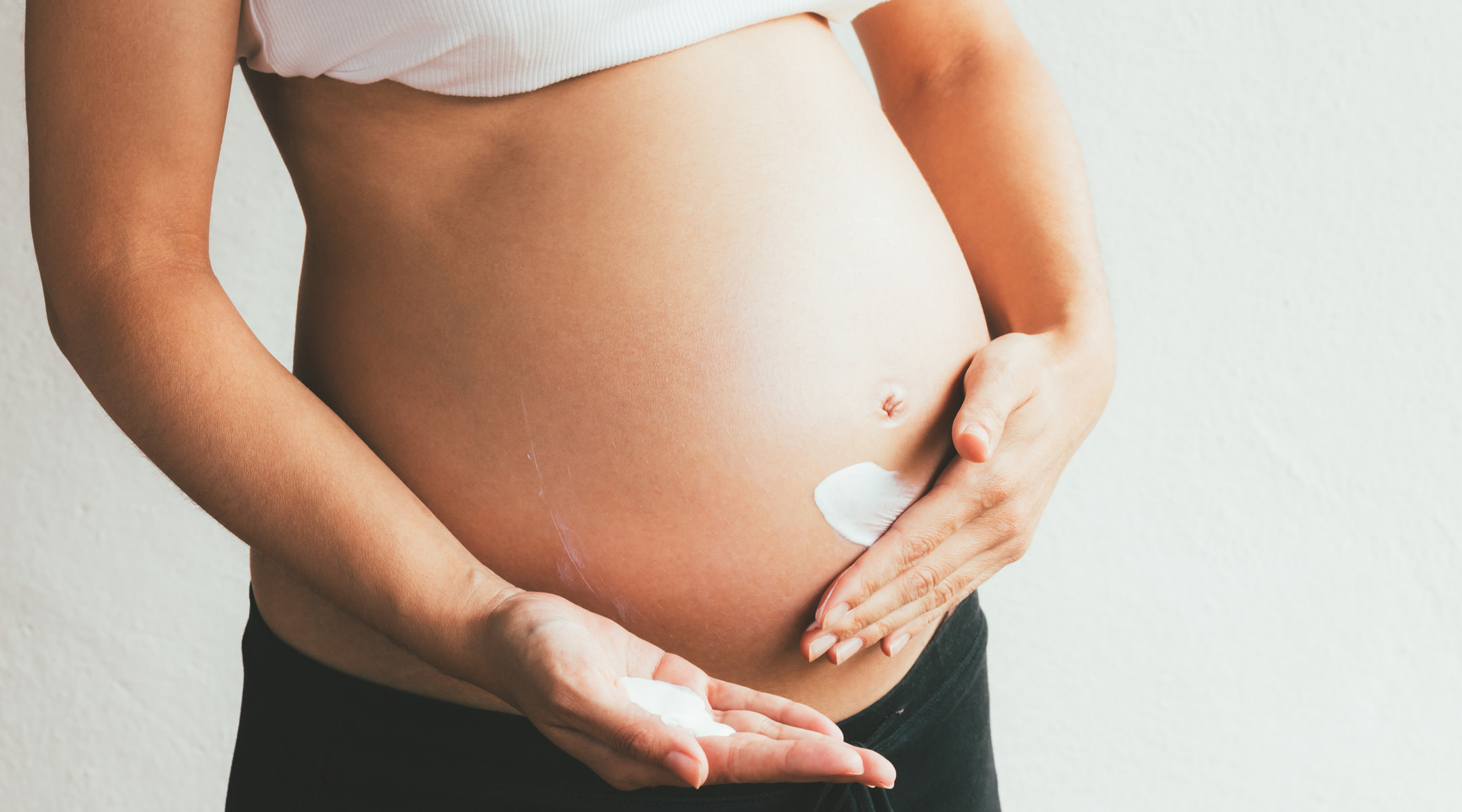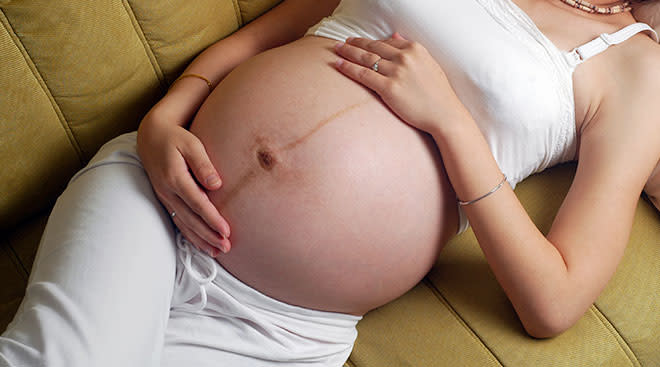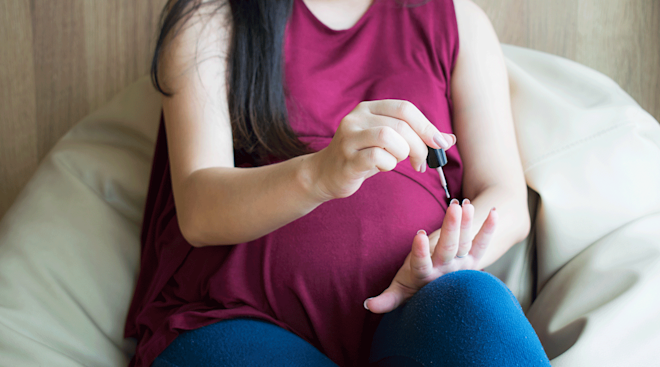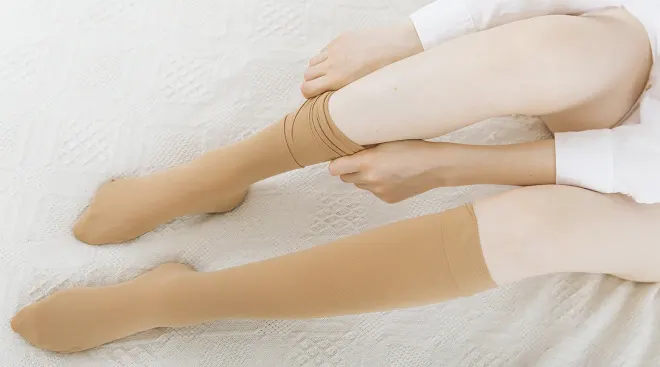Top 6 Annoying Pregnancy Skin Issues (and How to Deal)
Now that you’re expecting, you may be radiating with excitment, but your pregnancy complexion doesn’t always reflect that inner joy. Skin issues can abound during pregnancy—we’re talking everything from teenage-like acne to stretch marks and strange rashes. Here are some of the most common skin problems women encounter during pregnancy, and what you can do about them.
Your skin is extra-sensitive right now, so be easier on it now that you’re pregnant. You might get red more easily if you scrub at it too hard, and even your normal facial might verge on painful. So skip the body scrub and exfoliants and instead use a loofah or a soft, textured washcloth. “You certainly don’t want anything causing micro-tears on your skin,” says Melissa Schweiger, coauthor of Belli Beautiful: The Essential Guide to the Safest Health and Beauty Products for Pregnancy, Mom, and Baby. “The more cuts and wounds on your skin, the easier it is for chemicals to be absorbed into your bloodstream.” That’s why many mamas-to-be start choosing natural lotions and washes with less chemicals. Certain ingredients aren’t just potential irritants—some can actually pose health risks to baby. (See which ones to avoid here.) Even if generally benign, some perfumed lotions might also irritate your skin (and make you nauseated, thanks to your heightened sense of smell), so consider switching to unscented products.
Obviously, your hormones are all out of whack by now, and that might mean pimples reminiscent of those you got back in high school. The cruel joke, of course, is that some acne products are unsafe to use during pregnancy, so before you use anything, check it with your doctor. Prescription medications like Retin-A and tetracycline are definite no-nos. The jury’s out on over-the-counter creams, since they haven’t been tested specifically on pregnant women (yup, you find that a lot with products). While some experts believe low concentrations of ingredients like benzoyl peroxide and salicylic acid may pose low risk, others recommend avoiding altogether to be safe. “You can safely use lactic acid, tea tree oil or sulfur to treat acne,” Schweiger says. Don’t touch, pick or squeeze pimples—wash with a mild cleanser twice a day and use steam to clear clogged pores. Read more on treating acne during pregnancy here.
While some moms-to-be find themselves breaking out, others are dealing with drier skin than they’ve ever experienced (if you’re one of the lucky ones who’ve got a combo of the two, our sympathies). Make sure you’re drinking lots of water—you need more now that you’re expecting—and try running a humidifier in your bedroom at night to help your body keep in as much moisture as possible. Use a gentle lotion or moisturizer. And if you get nasty, itchy sensations because of your dry skin (and all that stretching!), try a warm (not hot!) oatmeal bath. Get more info on dry skin during pregnancy here.
Sorry, mom-to-be, but “pregnancy glow” does not refer to a bronzed, sun-kissed complexion. You should actually try to stay out of the sun as much as you can while you’re pregnant. That’s because your surging hormones make you susceptible to dark patches on your skin—known as melasma, or the mask of pregnancy, which is triggered by sun exposure. So pull out the big floppy hat, find a beach umbrella and be diligent about wearing sunscreen with an SPF of at least 30 every day. “The safest sun protection to use during pregnancy is physical or mineral blocks—the ones made with either titanium dioxide or zinc oxide,” Schweiger says. “Chemical sunscreens, such as oxybenzone, homosalate and avobenzone, can potentially irritate the skin and have higher risks associated with them.” We know, we know: more annoying label-reading. But you’ll feel good knowing you made the safest choice for you and baby.
Now you’ve got another big skin concern: stretch marks. Anytime someone’s body grows quickly, they’re at risk for stretch marks, so the fact that baby is growing exponentially in there puts you right in the high-risk zone. Of course, not every mom-to-be gets stretch marks. “For most people, whether or not they get stretch marks has to do with genetic predisposition,” says Glenn Kolansky, MD, a board-certified dermatologist in New Jersey. But you can do your best to head them off by gently exfoliating and thoroughly moisturizing your belly, breasts, stomach, hips and thighs as much as you can. As for what moisturizer to use, it’s hard to make a recommendation. “A lot of products make claims,” Kolansky says. “Some may help but aren’t really proven to prevent stretch marks.” Check out more on preventing and treating stretch marks here.
If you’ve got red, itchy skin, it’s important not to ignore it. Itchy feet and hands could be a sign of cholestasis of pregnancy, a complication that can cause liver problems for baby. Your doctor can do a simple blood test to make sure that’s not causing your rash. Another common pregnancy rash is PUPPP (pruritic urticarial papules and plaques of pregnancy), which often starts in the abdomen and spreads from there. PUPPP is actually harmless to baby, but it will be completely aggravating for you. We’ve got full details on how to deal with it here.
Expert bios:
Melissa Schweiger is a New York City-based beauty writer and the coauthor of Belli Beautiful: The Essential Guide to the Safest Health and Beauty Products for Pregnancy, Mom, and Baby
Glenn Kolansky, MD, FAAD, is a board-certified dermatologist at Advanced Dermatology Surgery & Laser Center in Tinton Falls, New Jersey. He earned his medical degree at the State University of New York Health Science Center in Brooklyn, and is a fellow of the American Academy of Dermatology, the American Society of Dermatologic Surgery and the American Society of Laser Medicine and Surgery.
Please note: The Bump and the materials and information it contains are not intended to, and do not constitute, medical or other health advice or diagnosis and should not be used as such. You should always consult with a qualified physician or health professional about your specific circumstances.
Navigate forward to interact with the calendar and select a date. Press the question mark key to get the keyboard shortcuts for changing dates.




















































